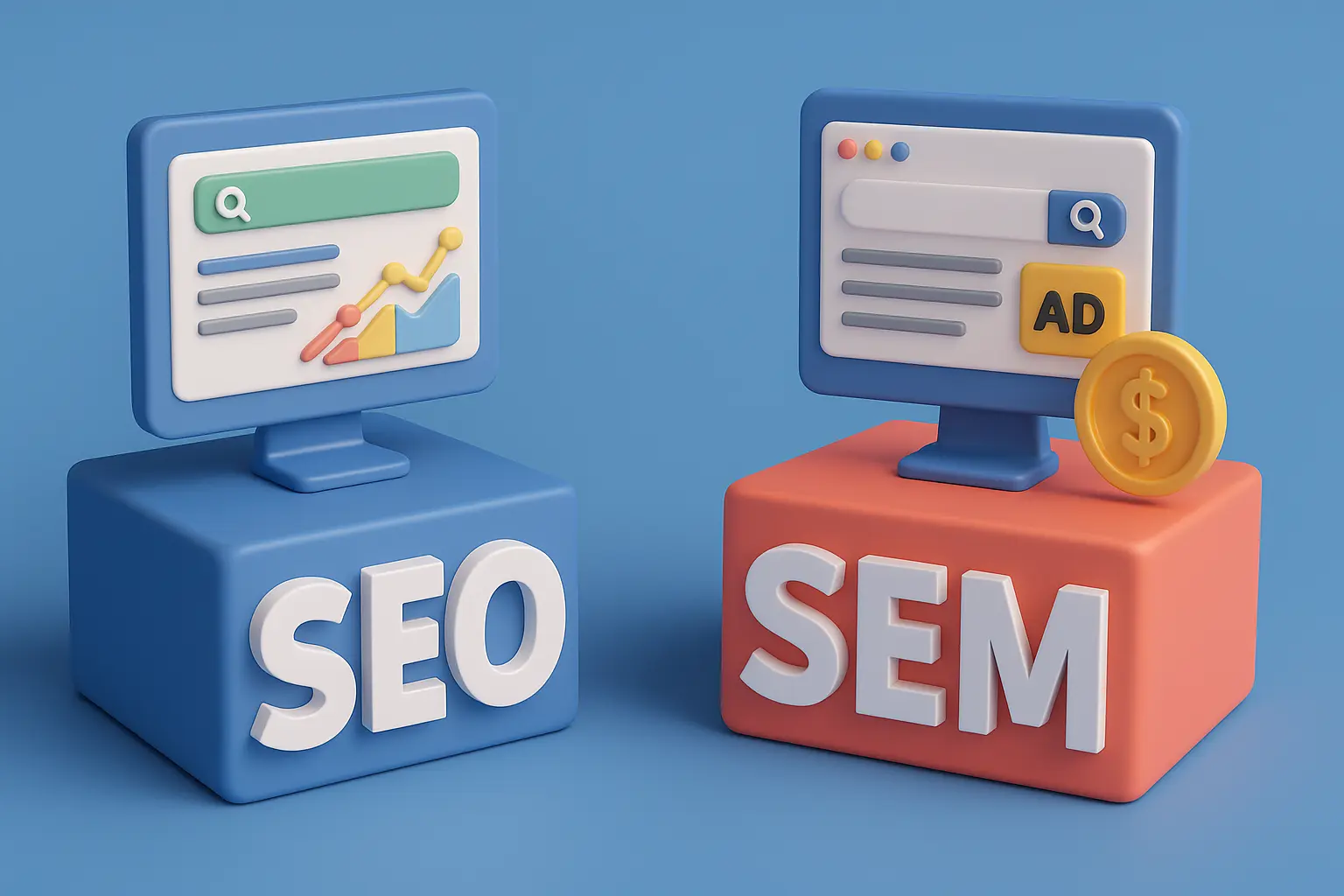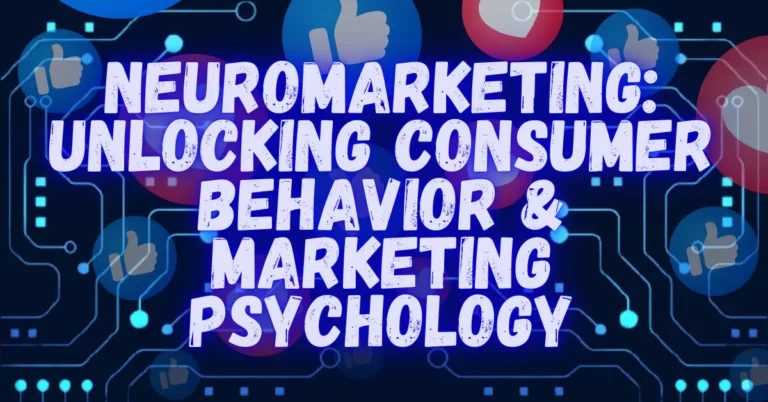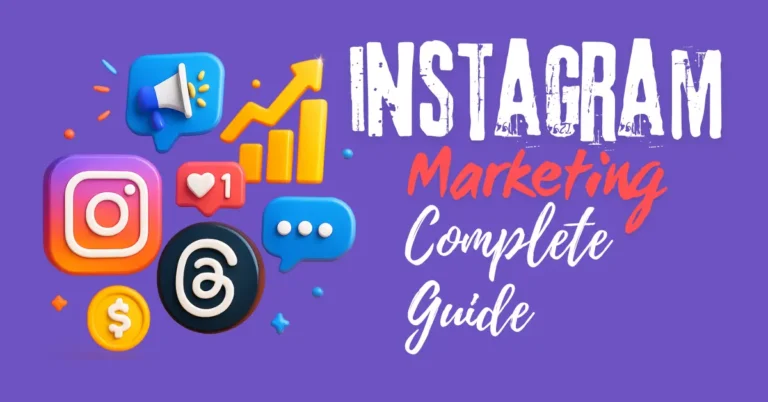Imagine this: You’ve poured your heart into building an incredible website – the perfect product, invaluable content, a seamless user experience. You hit publish… and hear crickets. Your dream customers are searching for exactly what you offer, but they can’t find you. Why? Because you’re missing from the digital map – the search engine results pages (SERPs). This is where Search Engine Optimization (SEO) and Search Engine Marketing (SEM) become your essential navigational tools. But what are they, how do they differ, and crucially, how do they work together to drive real business results? Buckle up; we’re diving deep.
Introduction: The Search Visibility Imperative
In today’s hyper-competitive digital landscape, being invisible online is business suicide. Over 90% of online experiences begin with a search engine, primarily Google. If you’re not showing up when potential customers type in relevant queries, you’re missing out on a massive, intent-driven audience actively seeking solutions. Search Engine Optimization and Search Engine Marketing are the twin engines powering your journey to SERP visibility.
While often used interchangeably (incorrectly!), they represent distinct strategies with unique strengths, costs, and timelines. Understanding the difference between SEO and SEM, and more importantly, how they synergize, is fundamental to crafting a winning online marketing strategy. This guide will demystify both, compare them head-to-head, reveal how they complement each other, and equip you with actionable insights to leverage their combined power. Let’s unlock the secrets of search dominance.
Table of Contents
What is Search Engine Optimization (SEO)? The Long Game of Organic Growth
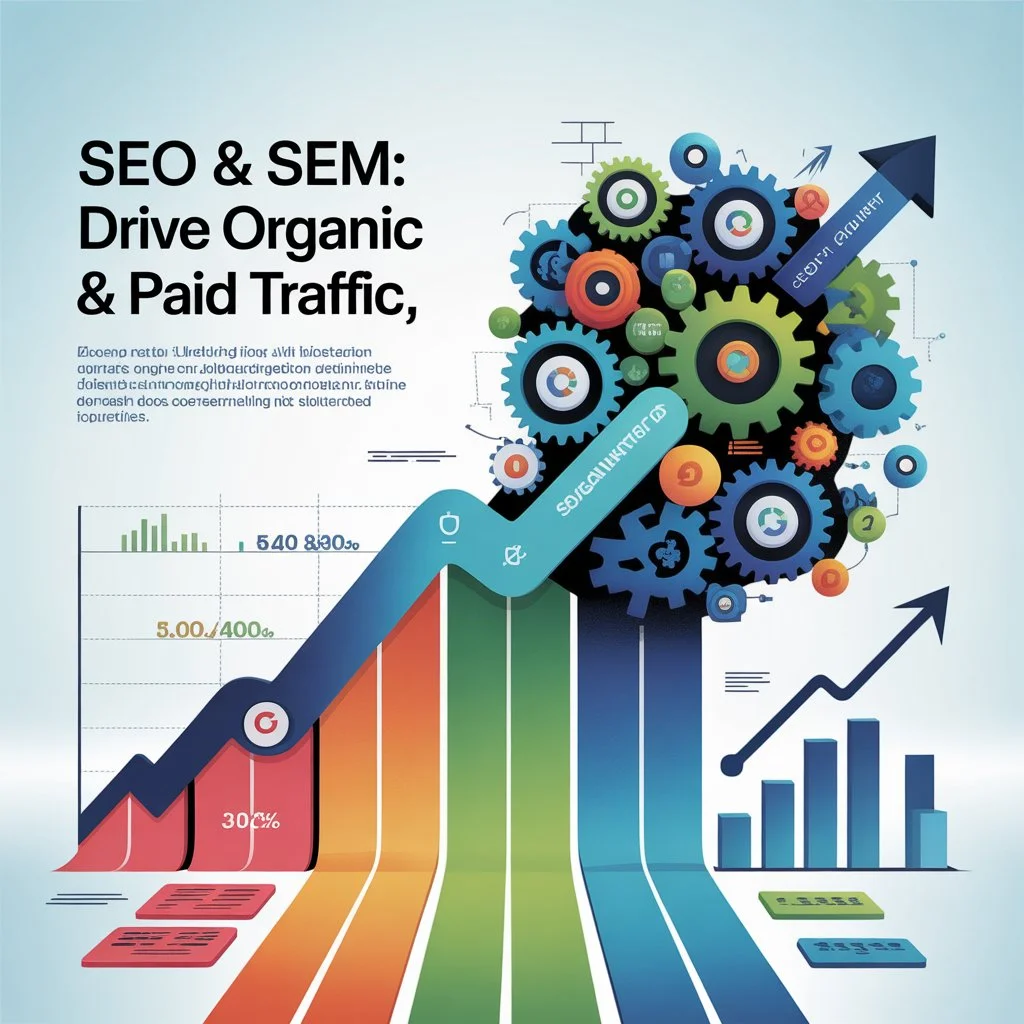
Search Engine Optimization (SEO) is the art and science of optimizing your website and its content to rank higher in the unpaid, organic search results of search engines like Google, Bing, and DuckDuckGo. Think of it as making your website incredibly attractive, relevant, and understandable to search engine algorithms, so they naturally recommend you to users searching for topics related to your business.
SEO isn’t about tricking search engines; it’s about aligning with their core goal: providing the best possible answer to a user’s query. It’s a marathon, not a sprint, focused on sustainable, long-term growth.
How SEO Works: The Three Pillars
SEO success rests on three interconnected pillars:
- Technical SEO: The Foundation
- What it is: Ensuring search engine crawlers can efficiently find, access, understand, and index your website’s content.
- Key Elements:
- Crawlability & Indexing: Can search engine bots easily navigate your site? (Robots.txt, sitemaps, internal linking).
- Site Speed: Lightning-fast loading times are crucial for users and rankings (Core Web Vitals – LCP, FID, CLS).
- Mobile-Friendliness: With mobile-first indexing, your site must perform flawlessly on smartphones.
- Website Security (HTTPS): A basic ranking signal and user trust factor.
- Structured Data (Schema Markup): Helps search engines understand your content better, potentially leading to rich snippets (enhanced results).
- Site Architecture: A logical, hierarchical structure makes content easy to find for users and bots.
- Why it Matters: If search engines can’t crawl or understand your site effectively, even the best content won’t rank.
- On-Page SEO: Optimizing the Content Experience
- What it is: Optimizing individual pages and their content for specific keywords and user intent.
- Key Elements:
- Keyword Research: Identifying the right terms your target audience searches for (search volume, intent, difficulty).
- Content Quality & Relevance: Creating genuinely valuable, comprehensive, and original content that satisfies user intent.
- Title Tags & Meta Descriptions: Compelling headlines and summaries that entice clicks (CTR is a ranking factor!).
- Header Tags (H1-H6): Structuring content logically for readability and keyword signaling.
- Image Optimization: Using descriptive filenames and alt text.
- Internal Linking: Connecting related pages within your site to spread authority and aid navigation.
- URL Structure: Clean, descriptive URLs.
- Why it Matters: This directly signals to search engines what your page is about and how well it answers the user’s question.
- Off-Page SEO: Building Authority & Trust
- What it is: Signals from outside your website that indicate its credibility, authority, and popularity.
- Key Element (Primarily):
- Link Building: Acquiring high-quality backlinks (links from other reputable websites to yours). This is the web’s way of “voting” for your content’s value. Quality (relevance, authority) far outweighs quantity.
- Other Factors: Brand mentions (even without links), social signals (indirectly), online reviews.
- Why it Matters: Search engines view backlinks as strong endorsements. A robust backlink profile significantly boosts your site’s authority and rankings.
Pro Tip: Conduct regular SEO audits to identify crawl errors, duplicate content, or missing tags. Tools like Google Search Console and Moz Pro are indispensable for this process.
Pros of SEO:
- Cost-Effective Long-Term: No direct cost per click. Once you rank, traffic is essentially “free.”
- Sustainable Traffic: High rankings, once achieved and maintained, drive consistent, predictable organic traffic.
- Builds Credibility & Trust: Users often perceive organic results as more trustworthy and legitimate than ads.
- Targets High-Intent Users: People actively searching for solutions.
- Complements Other Marketing: Fuels content marketing, social media, email marketing.
Cons of SEO:
- Slow Results: Takes significant time (often 6-12+ months) to see substantial results due to algorithm complexity and competition.
- Requires Ongoing Effort: Algorithms change constantly; SEO is never “done.”
- Complexity & Uncertainty: Google uses hundreds of ranking factors; results aren’t guaranteed.
- Highly Competitive: Dominating popular keywords is fiercely contested.
- Less Control: You can’t dictate when or exactly where you rank organically.
What is Search Engine Marketing (SEM)? The Power of Paid Visibility
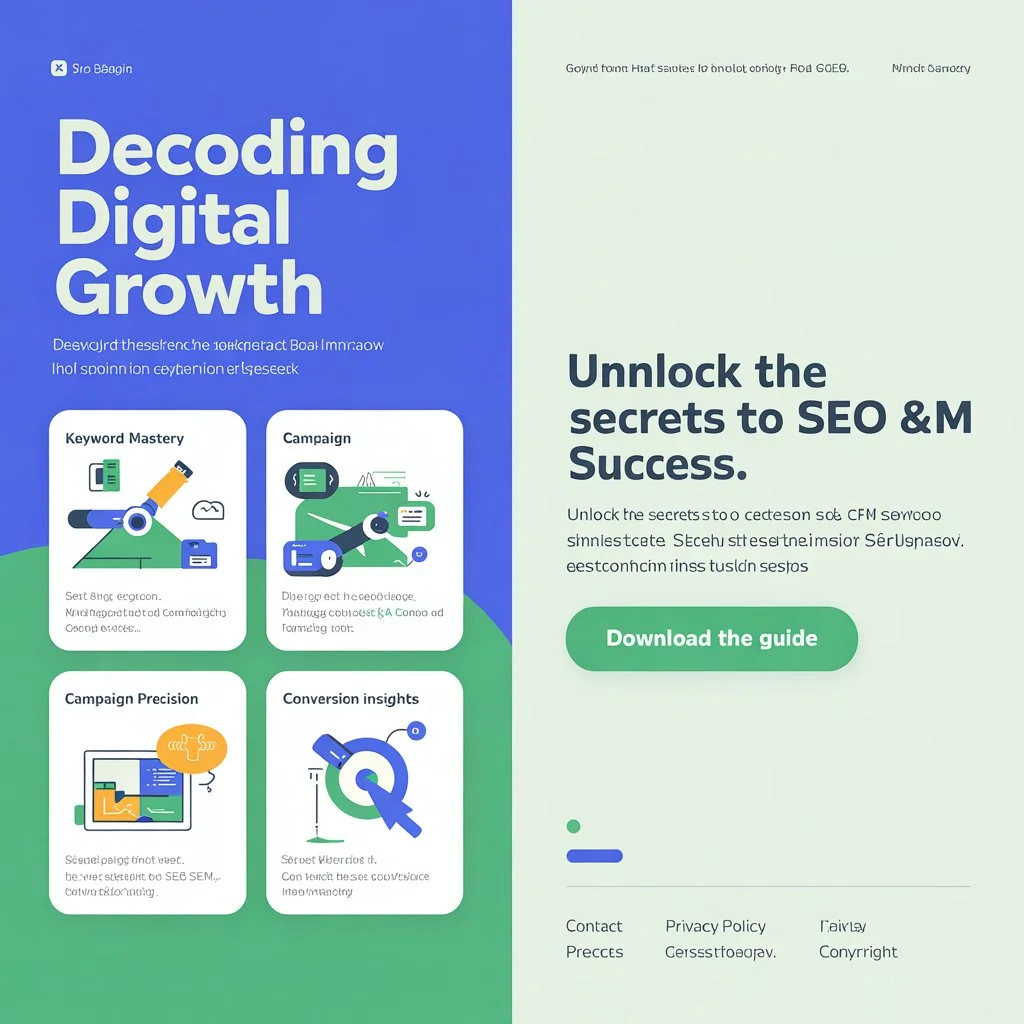
Search Engine Marketing (SEM) is the broader discipline of promoting websites by increasing their visibility in search engine results pages (SERPs) primarily through paid advertising. While sometimes used synonymously with PPC (Pay-Per-Click), SEM technically encompasses both paid search advertising and SEO. However, in common industry parlance (and for the purpose of this comparison), SEM refers specifically to paid search strategies.
SEM is about buying ad space directly on search engine results pages. You bid on keywords relevant to your business, and your ads appear above or below the organic results when users search for those terms. You pay only when someone clicks your ad (hence PPC).
How SEM Works: The Paid Search Engine
- Keyword Research & Bidding: Similar to SEO, you identify target keywords. You then set a maximum amount you’re willing to pay when someone clicks your ad for that keyword (your bid).
- Ad Creation: Craft compelling text ads (headlines, descriptions, display URLs) designed to entice clicks from your target audience.
- Auction & Ranking: When a user searches, Google runs a real-time auction among advertisers targeting that keyword. Your ad’s position isn’t just determined by your bid. Google uses an Ad Rank formula:
- Ad Rank = Max Bid x Quality Score
- Quality Score: This crucial metric (rated 1-10) is Google’s assessment of your ad’s relevance and landing page experience based on:
- Expected Click-Through Rate (CTR): How likely is your ad to be clicked?
- Ad Relevance: How closely does your ad match the user’s intent?
- Landing Page Experience: Is your landing page relevant, useful, transparent, and easy to navigate?
- Ad Display & Payment: If your Ad Rank is high enough, your ad displays. You only pay when someone clicks, and you pay the minimum amount needed to beat the advertiser below you (often less than your max bid).
- Targeting & Budgeting: You control exactly where your ads show (geographic locations, languages, devices, times of day) and set daily or monthly budgets.
The SEM Ecosystem (Beyond Text Ads):
While search text ads are the core, modern SEM includes:
- Shopping Ads: Product listings with images, prices, and merchant names (crucial for e-commerce).
- Display Ads: Image or video ads shown across the Google Display Network (millions of websites and apps).
- Video Ads: Ads on YouTube and partner sites.
- Local Search Ads: Ads specifically targeting users near a physical business location.
- Remarketing/Retargeting: Showing ads to users who previously visited your website or app.
Pros of SEM:
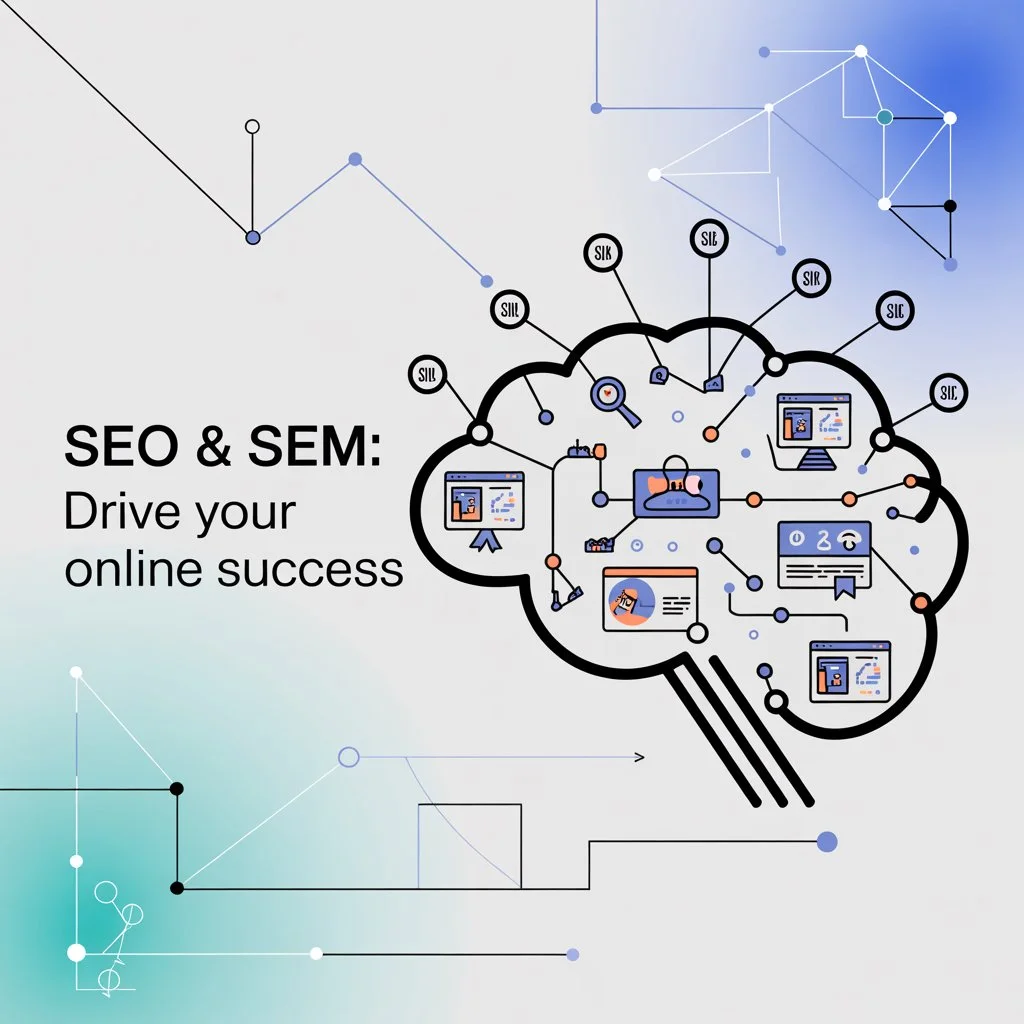
- Immediate Visibility: Get your ads in front of searchers literally within minutes of launching a campaign.
- Precise Targeting: Control who sees your ads (location, device, demographics, interests, search intent).
- Measurable ROI: Track clicks, conversions, cost-per-acquisition (CPA), and return on ad spend (ROAS) with high granularity.
- Budget Control: Set strict daily/monthly spending limits.
- Test & Refine: Quickly test ad copy, landing pages, and offers to optimize performance.
- Brand Building: Increase top-of-mind awareness, even if users don’t click immediately.
Cons of SEM:
- Cost: You pay per click; costs can escalate quickly, especially in competitive industries. Traffic stops when funding stops.
- Ad Fatigue: Users can become blind to ads, or your creative can become stale, requiring constant refreshing.
- “Ad Blindness”: Some users instinctively skip paid results, favoring organic listings.
- Complexity: Managing campaigns effectively (especially at scale) requires expertise or time investment.
- Less “Free” Credibility: Paid ads can sometimes be perceived as less trustworthy than organic results.
SEO vs SEM: The Crucial Differences (Head-to-Head)
Let’s crystallize the core distinctions:
| Feature | SEO (Search Engine Optimization) | SEM (Search Engine Marketing – Paid Search) |
|---|---|---|
| Core Goal | Earn organic rankings | Buy ad placements |
| Cost Model | Indirect Costs (Time, Resources, Tools) | Pay-Per-Click (PPC) – Direct Cost |
| Timeline | Long-Term (Months to Years) | Immediate (Hours to Days) |
| Traffic Type | Organic | Paid |
| Visibility | Below paid ads (usually) | Top (above organic) and Bottom of SERP |
| Control | Limited control over ranking position & timing | High control over ad position, budget, timing, targeting |
| Results Duration | Long-lasting (with maintenance) | Lasts only while campaign is active & funded |
| Credibility | Generally perceived as higher trust | Can be perceived as less trustworthy (“ad”) |
| Primary Focus | Website health, content quality, backlinks | Keyword bids, ad relevance, Quality Score, landing pages |
| Best For | Sustainable growth, brand authority, cost-effective traffic | Quick launches, promotions, testing, precise targeting |
Synergy in Action: How SEO and SEM Work Together for Maximum Impact
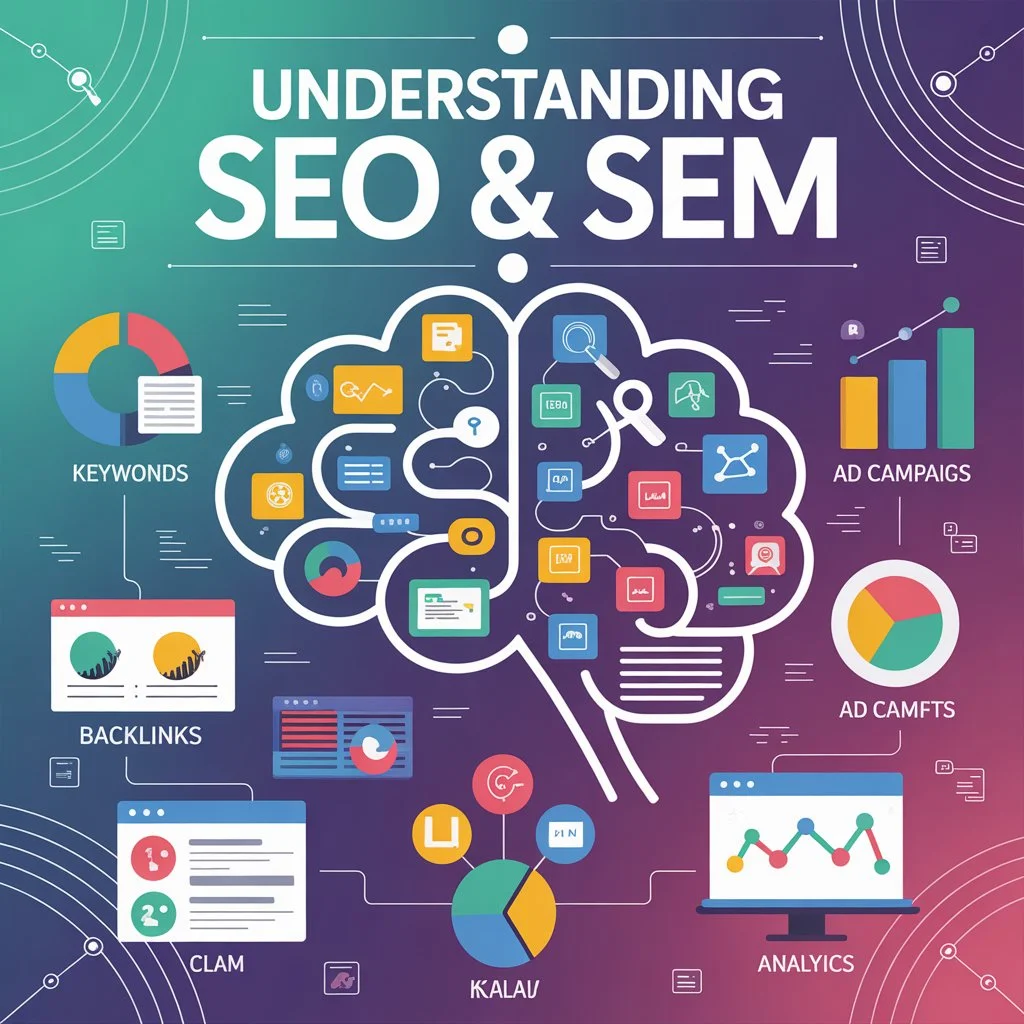
Viewing SEO and SEM as rivals is a strategic mistake. They are powerful allies. A truly integrated search strategy leverages the unique strengths of each to create a sum greater than its parts. Here’s how they work together:
- Keyword Research Powerhouse:
- SEM Informs SEO: Running paid campaigns provides immediate, real-world data on which keywords actually convert, their search volume variations, and the precise user intent behind them. This is invaluable for refining your SEO content strategy. Why guess what might work organically when you can know what does work via paid?
- SEO Informs SEM: SEO keyword research can uncover valuable long-tail keywords or niche topics that might be cheaper and highly relevant to target via SEM.
- Landing Page Optimization:
- SEM Drives Rapid Testing: Paid traffic allows you to A/B test different landing page variations quickly and at scale. The winning versions (highest conversion rates) can then be applied to your organic landing pages, boosting SEO conversion potential.
- Remarketing & Audience Building:
- SEM Builds Audiences: Paid search campaigns (and especially Display Network campaigns) allow you to build remarketing lists – audiences of users who visited specific pages (e.g., product pages, blog posts) but didn’t convert.
- SEO Feeds Audiences: Your high-performing organic content naturally attracts relevant visitors. You can add these visitors to remarketing lists via tracking pixels, allowing you to target them later with tailored SEM ads, nurturing them towards conversion.
- Dominating the SERP:
- Maximize Real Estate: Appearing both in the paid ads (top) and organic results (below) for a target keyword significantly increases your brand’s visibility and share of voice on the SERP. This reinforces brand credibility and captures more clicks overall. Studies show this dual presence boosts click-through rates for both listings.
- Mitigating Risk & Filling Gaps:
- SEM Covers SEO Gaps: While you work on long-term SEO for competitive terms, SEM provides immediate visibility and traffic for those keywords. It also captures traffic during SEO algorithm updates or penalties that might temporarily impact organic rankings.
- SEO Reduces Long-Term SEM Costs: As your organic rankings improve for valuable keywords, you may find you can reduce your SEM bids for those terms or reallocate budget to more competitive areas, lowering overall customer acquisition costs.
- Brand Consistency & Reinforcement:
- Unified Messaging: Ensure your paid ad copy and the messaging/content on the corresponding organic landing pages are aligned, reinforcing your value proposition and building consistent brand recognition.
Choosing Your Focus (or Blend): Strategic Considerations
The ideal mix of SEO vs SEM depends on your specific business goals, resources, and timeline:
- Prioritize SEO If:
- You have a long-term vision and patience.
- Your budget for ongoing ad spend is limited.
- Building deep brand authority and trust is paramount.
- You operate in a niche with lower keyword competition.
- You have valuable, evergreen content assets.
- Prioritize SEM If:
- You need immediate traffic and results (e.g., launching a new product, time-sensitive promotion).
- You have a well-defined budget for advertising.
- You need precise targeting for specific locations, demographics, or times.
- You want to test new markets, keywords, or offers quickly.
- You operate in a highly competitive market where top organic rankings are difficult.
- The Winning Strategy (Almost Always): Integrate Both. Leverage SEM for speed, testing, and targeted campaigns while simultaneously investing in SEO for sustainable, cost-effective long-term growth and authority. Use the insights from each to inform and optimize the other.
Beyond the Basics: Advanced Synergy Tactics
- Using SEM for Content Promotion: Drive paid traffic to your best SEO-optimized content (pillar pages, research reports) to accelerate audience building, backlink acquisition, and social shares – boosting its organic potential.
- Competitive Conquesting: Use SEM to bid on competitor brand names (where allowed) to capture users actively searching for alternatives. Monitor their organic keywords via SEO tools for opportunities.
- Local SEO + Local SEM: For brick-and-mortar businesses, combine Google Business Profile optimization (Local SEO) with Local Search Ads (SEM) to dominate “near me” searches and drive foot traffic.
- Data Sharing: Use analytics platforms (like Google Analytics 4) to track both organic and paid traffic paths, conversions, and user behavior holistically. This unified view is essential for strategic decision-making.
Conclusion: The Search Engine Synergy Imperative
Search Engine Optimization (SEO) and Search Engine Marketing (SEM) are not opposing forces; they are complementary pillars of a robust digital marketing foundation. SEO builds the enduring structure of organic visibility, trust, and sustainable traffic. SEM provides the powerful engine for immediate reach, precise targeting, and measurable conversions. Understanding the difference between SEO and SEM is crucial, but mastering their synergy is where true search dominance lies.
By leveraging the data from your paid campaigns to refine your organic strategy, using organic insights to build smarter paid audiences, and dominating the SERP with a combined presence, you create a formidable search engine marketing machine. Ignoring one in favor of the other leaves significant opportunity – and revenue – on the table.
Ready to harness the combined power of SEO and SEM?
- Audit Your Current Strategy: Where are you strong? Where are the gaps? ([Internal Link: How to Perform a Basic SEO Audit])
- Set Clear Goals: What do you want to achieve (traffic, leads, sales, brand awareness)?
- Develop an Integrated Plan: Allocate resources and define how SEO and SEM will work together for your business.
- Test, Measure, Optimize: Continuously use data from both channels to refine your approach.
The search landscape is constantly evolving, but the fundamental power of SEO and SEM, working in concert, remains the cornerstone of online visibility and success.
FAQs: SEO vs SEM Demystified
Q: Is SEM just another name for PPC?
A: Technically, SEM encompasses all search engine marketing, including SEO. However, in common usage, SEM is synonymous with paid search advertising, which operates on a PPC model. So yes, when people say “SEM,” they usually mean paid ads/PPC.
Q: Which is more important, SEO or SEM?
A: Neither is universally “more important.” It depends entirely on your specific business goals, budget, and timeline. For long-term, cost-effective growth, SEO is essential. For immediate results and precise targeting, SEM is key. The most effective strategies integrate both.
Q: Can I do SEO myself?
A: Basic SEO (like optimizing title tags, meta descriptions, basic keyword research, creating good content) is accessible to many. However, technical SEO, advanced link building, and keeping up with algorithm changes often require significant expertise, time, and specialized tools. Many businesses benefit from professional SEO services or consultants.
Q: How much does SEM cost?
A: SEM costs vary wildly based on industry, keyword competitiveness, quality score, and your goals. You control your daily budget. Costs can range from a few dollars per day to thousands. You pay only when someone clicks your ad.
Q: How long does SEO take to work?
A: SEO is a long-term strategy. While some technical fixes might show results in weeks, seeing significant organic traffic growth typically takes 6 months to 1 year or more, depending on the competitiveness of your niche, website authority, and the quality/consistency of your efforts. Patience and persistence are key.
Q: Do I need SEO if I’m doing SEM?
A: Absolutely! SEM gives you immediate visibility, but it stops the moment you stop paying. SEO builds lasting organic visibility and credibility that works for you 24/7. They also inform each other strategically. Relying solely on SEM is expensive and lacks long-term stability.
Call to Action (CTA):
Don’t let your dream customers search in vain! Understanding the synergy between SEO and SEM is your first step towards dominating the search results. Share this guide with your team or network if you found it valuable. Have questions about implementing SEO or SEM for your business? Drop a comment below – let’s discuss!
Ready to dive deeper? Explore our related guides:
- The Complete Guide to WhatsApp Advertising in 2025: Boost Sales & Engagement
- Master Email List Building: 6 Proven Steps to Build High-Converting Lists for Bloggers
- Mastering Digital Marketing in 2025: Proven Strategies to Skyrocket Your Success
Subscribe to Today Tech Life for more actionable insights, guides, and the latest trends in digital marketing and technology delivered straight to your inbox!
